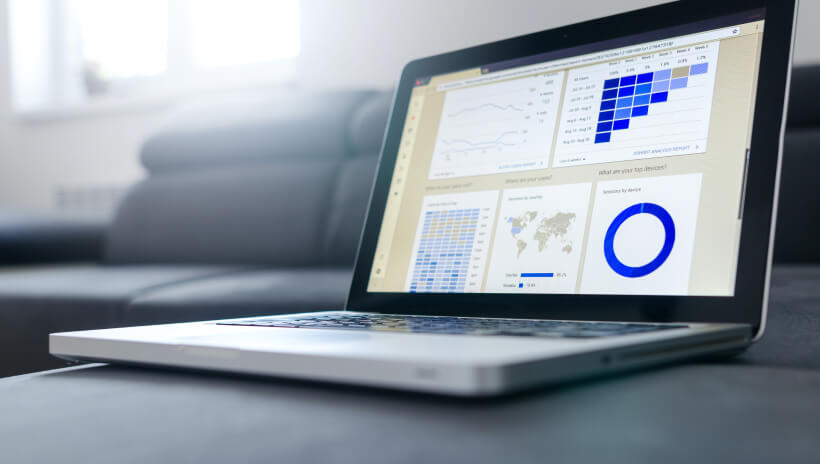The Significance of Using M&A Reports
A mergers and acquisitions report is a powerful decision-making tool for any industry. M&A analytics offer a full scope of the global market in general and particularly niche segments. Today we explore the latest M&A trends and the advancements in technology-enabled data analysis.
An M&A report is the central instrument in merger analytics. Such reports offer detailed reviews of the key points with impact data and future outlooks.
The idea behind using M&A reporting as a decision driver is to assess more significant amounts of information and to see the big picture every step of the way.
- Main takeaway: M&A reports help dealmakers make informed and forward-looking decisions.
Additionally, the centralized data review available with a digital merger report helps to proceed through the deal faster. Combined with advanced data collection and communication tools, these reports started a new era of mergers and acquisitions.
How M&A reports drive modern deal making
A well-structured mergers and acquisitions report elevates the decision-making process on several levels. The key aspects of this elevation are:
- Absolute unity
With online M&A reports, all parties and departments have simultaneous access to the same necessary data. Unlike before, each team will first complete their function and then come together towards the deal finale.
The unified access approach allows making more resourceful collective decisions. As data gets immediately evaluated and compared, the required changes and updates happen faster and bring more value.
- Increased depth
Contemporary data analytics provide access to deeper levels of information. Sophisticated technology allows for the collection and automatic analysis of additional data, which leads to efficient deal-making.
The decision-makers will still leverage off high-impact trends such as quarterly sales, for example. However, with a merger report, they will also review the summaries of low-impact info pieces that might assist during the negotiation and alter the result.
- Intelligent inquiring
Seeing the data in its full scope via an M&A report helps to spot unclear or weak aspects much quicker. This way, all parties can ask the right questions to drive the deal forward.
Once again, digitalization played an essential role in optimizing mergers and acquisitions from the query point of view. Advanced M&A tools let the international deal participants get answers sooner.
- Boosted SPA
Composing a sales and purchase agreement (SPA) can be a time-consuming endeavor. The main challenge of the SPA procedure is coordinating the busy schedule of executives and advisors.
Examining M&A trends through an analytical report saves everyone’s time and accelerates the decision-making process. - Data practicality
A mergers and acquisitions report offers value beyond the decisive moment. M&A consist of several stages, all of which require high focus and resourcefulness.
The report can help guide the deal from initial due diligence to post-factum integration, and sometimes even longer.
M&A trends in 2021
2021 continues to carry many pandemic-induced M&A trends from the previous year. Some are more prominent than others and seem to be dictating the general mood of the current decade.
- Divestment deals
The capital loss caused by the turbulent 2020 continues to stimulate companies to sell parts of their business. As divestitures take place, executives turn to restructuring and outlining the core focus of their operation.
Active restructures are very likely to continue after the market consolidates as more businesses enter the path of conscious development.- Example: AT&T’s DirecTV agreement with TPG, a private equity company
- Example: AT&T’s DirecTV agreement with TPG, a private equity company
- Technological focus
Healthcare and technology remain on the main stage, according to many M&A reports. But technology-based mergers and acquisitions have a more visible upper hand.
The global need for digitalization gave AI, IoT, and cloud technologies an unprecedented boost of financing and attention.- Example: IBM acquiring Turbonomic on its mission to reshape the company’s focus towards AI and the hybrid cloud
- Example: IBM acquiring Turbonomic on its mission to reshape the company’s focus towards AI and the hybrid cloud
- Inter-segment exploration
There are multiple reasons for companies to explore new markets and make cross-segment M&A deals. Vertical mergers come with improved managerial capabilities, a rise in profits, and better cost and quality control.
The majority of inter-segment mergers occur within the same industry, allowing companies to enhance their standing and ensure sustainable growth.- Example: Ikea purchasing nearly 94,000 acres of Baltic region forests
- Example: Ikea purchasing nearly 94,000 acres of Baltic region forests
- SPACs
The Special Purpose Acquisition Companies or SPACs gained strong momentum in the second half of 2020.
SPACs are publicly traded, and their key purpose is to finance private companies through investing or M&A, taking them public at the same time.- Example: Hippo Enterprises’ merger with Reinvent Technology Partners Z
- Example: Hippo Enterprises’ merger with Reinvent Technology Partners Z
- Virtual data rooms
Online data rooms enabled most mergers and acquisitions in recent years, which led to a visible rise in the data room market valuation. The digital data storage and exchange space allow the parties to centralize the deal process and generate internal M&A reports on the go.
Some data room providers specialize in mergers and acquisitions, offering value in various aspects from data collection and analysis to deal pipeline establishment and monitoring.- Example: The virtual data room market’s value in 2020 was $1.4B and is expected to grow to $2.7B before 2025.
Final word
Although many 2021 M&A trends carried over from the previous year, the expert outlook is much more positive. As long as companies remain committed to optimizing the mergers and acquisitions’ processes by utilizing reports and digital tools, the future of M&A is highly promising.

